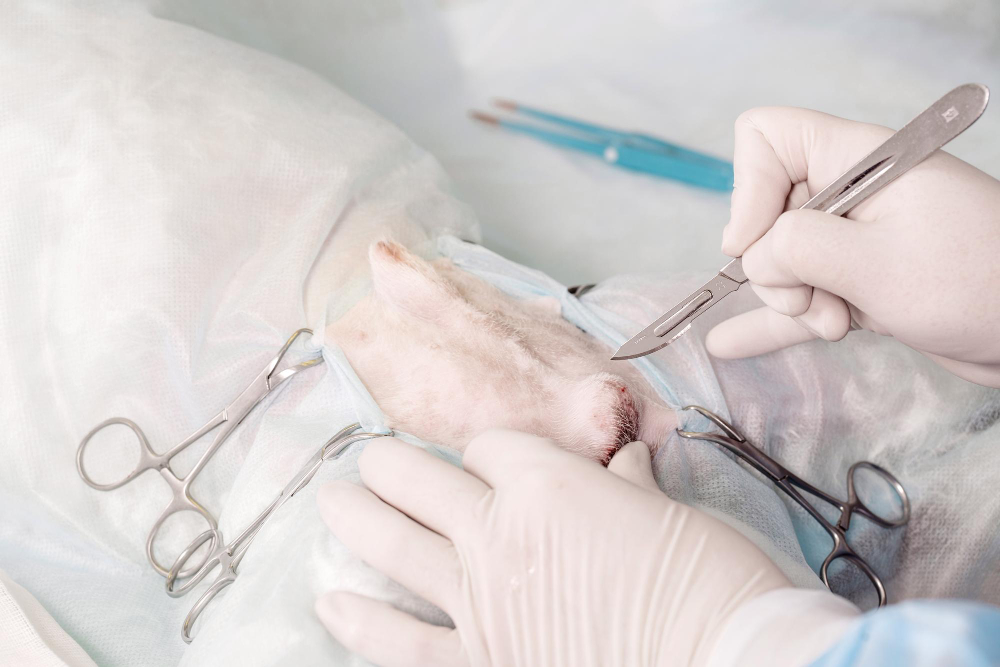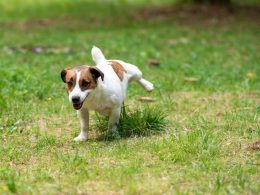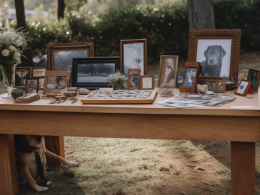Castration is one of the most used procedures for population control of domestic animals. The technique is invasive, performed under anesthesia, and consists of removing the gonads (organs that produce sex cells) from the animals, the surgery lasts about 30 minutes, and only a veterinarian can operate. Among the main benefits are prostate, breast, and testicle cancer prevention. Studies indicate that females spayed before the first heat reduce about 90% the risk of developing breast cancer. But like all surgery, it has risks, which can cause urinary incontinence, and hypothyroidism, and, as it is an invasive procedure, we cannot rule out the risk of death during the process.
Are There Two Ways To Neuter A Dog?
There are currently three ways to neuter dogs, all safe and efficient, the only difference being the technique used. Only a veterinarian can recommend the best method for neutering your dog. Check out the types of procedures that can be done:
- Ovariohysterectomy (Only For Females): known as the traditional method, during the procedure, the ovaries and uterus are removed through an incision of 10-15 cm in the abdomen.
- Hook Technique: this technique is performed with the aid of a Snook hook to capture the uterine horn in the case of females and to remove the spermatic cord in the case of males.
- Incision In The Flanks: the technique consists of removing the organs through an incision of 2-3 cm in the flanks.
Can You Neuter A Dog Without Surgery?
With the advancement of technology, new innovative techniques of castration without surgery have emerged. One of the known techniques is done with a drug made of zinc injected into the testicles, but it only works for males.
There is the possibility of performing the castration procedure for females and males through a laser, a device that generates a beam of light. Most of the lasers used are carbon dioxide lasers that create a beam of invisible light capable of vaporizing the water found in fabrics, removing or cutting small layers. In this sense, the laser replaces the use of scalpels to separate the reproductive organs.
Can Lasers Hurt Dogs?
The laser facilitates the surgical routine of many professionals, as it optimizes the time of surgeries. However, contrary to popular belief, the technique is more painful, but, on the other hand, the recovery time is shorter. In addition, surgery usually has a higher cost, leading many owners not to opt for this type of procedure.
Pre-Neutralization Care
Before the surgery, the pet will undergo a consultation to see how its health is and if it is fit for the operation. The veterinarian will order some tests to see if everything is well. The person in charge will be instructed to make water restrictions for at least six hours and food for at least twelve hours. It is essential as it will ensure his safety during the surgical procedure.
Preparation For Dog Castration
Despite being considered a routine surgery in most cases, preparation is necessary for addition to care after castration. Before surgery, the animal must consult the vet for a check-up, and the professional will order tests such as blood count and electrocardiogram. These precautions are essential because of anesthesia.
In addition to the consultation and exams, the tour dog must perform food and water restriction for the period recommended by the vet. The owner can also prepare in other ways, such as buying an Elizabethan collar and bringing a blanket to use in post-neuter care.
Post-Castration Care
Post-surgery, the buddy will be under observation at the clinic until it returns from anesthesia. It will be permitted to rest at home to receive the proper home care after the operation. On the way home, the pet may still be a little under the effect of anesthesia and, therefore, may behave differently. Be aware, vomiting after neutering is not uncommon, so be prepared by covering your pet’s bedding, rugs, and other places to minimize the risk of dirt. Carrying the transport box can also facilitate the removal of the animal from the clinic and make the journey more comfortable. In the house, the dog will only need a calm place and a warm bed to rest. Do not force the doggy to drink water or feed when it doesn’t want to because the pet receives saline in the surgery, and, usually, it doesn’t feel hungry or thirsty in the first hours after surgery. As an incision has been made, the animal can feel pain, so the veterinarian will indicate an analgesic that must be given at the right time and for the prescribed time. During the postoperative period, you must follow the guidelines received at the clinic and clean the suture daily with the help of a product indicated by the veterinarian. Sometimes it will be necessary to redo the sauce using gauze and micropore, but in most cases, only cleaning is enough.
Essential Care
- Comfort
Just like us, animals need post-surgical comfort and care. The recovery from dog castration needs a comfy space. Bed, a cover, and a cloth or sheet of its own it’s essential. The animal must rest absolutely to prevent the stitches from opening or the appearance of a lump after castration that can evolve into a hernia.
- Food And Water
Hydration and food are released according to the veterinarian’s guidance. Do not force the animal to eat, as the anesthesia can make the dog nauseous, causing vomiting after castration. In addition to nausea, some symptoms can appear after surgery, such as mild pain at the surgery local, drowsiness, lack of appetite, and urinary incontinence. Symptoms tend to go away quickly. If they persist, see the vet who performed the procedure.
- Medicines
Medications prescribed by the veterinarian must be given correctly and cleaning of the stitches, which should only be done under professional guidance.
How Long Should The Dog Wear The Cone After Laser Castration?
The time that the dog will have to use the cone will depend on each individual’s healing speed, being able to be of 5-10 days. During this period, the pet will need to keep its cone to prevent it from moving or removing the bandage, in addition to not contaminating the surgery site. This tool is also essential, as the pet without this accessory can remove its stitches in the mouth and urgently need a new surgery.
Finally, a new return date to the clinic is scheduled for the pet to be reassessed to remove the stitches. If post-neutering care has been done correctly, the animal’s health will be guaranteed, and he will soon play actively with the whole family.














